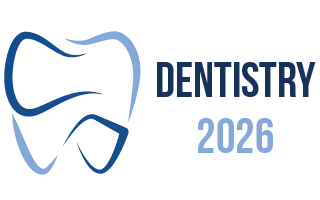3rd European Conference on
Dentistry and Oral Health
May 20-21, 2026 | Barcelona, Spain

Address: Avinguda Del Maresme 78 Ronda De Dalt Exit 15, 08940 Comellà de Llobregat, Barcelona, Spain
Dentistry 2026

Shri Vaishnav Institute of Forensic Science, Indore, India
Abstract:
Human identification is a crucial aspect of forensic investigations, particularly in cases involving mass disasters, accidents, or criminal incidents where conventional methods may be inadequate. Teeth play a significant role in human identification due to their unique characteristics, durability, and resistance to environmental factors. This paper provides an overview of the role of teeth in human identification, highlighting various dental features and forensic techniques employed in dental identification. Firstly, the anatomical structure of teeth, including crown morphology, root morphology, and dental occlusion, offers distinct characteristics that are highly individualized and resistant to postmortem changes. Dental records, such as dental charts, radiographs, and photographs, serve as invaluable sources of information for comparing ante-mortem and post-mortem dental characteristics. Furthermore, forensic odontology, a specialized branch of forensic science, utilizes dental evidence to establish the identity of deceased individuals. Methods such as dental charting, comparison of dental radiographs, and analysis of dental prostheses aid forensic odontologists in making accurate identifications. Additionally, age estimation based on dental development and wear patterns provides valuable information for narrowing down the pool of potential matches. Moreover, dental evidence can complement other forensic identification methods, such as DNA analysis and fingerprinting, enhancing the accuracy and reliability of identification processes. In cases where conventional identification methods are challenging or inconclusive, dental evidence often serves as a crucial tool for establishing the identity of human remains. In conclusion, the role of teeth in human identification is indispensable in forensic investigations. Through the meticulous analysis of dental features and comparison with ante-mortem records, forensic odontologists play a vital role in providing closure to families, aiding law enforcement agencies, and facilitating the administration of justice. Keywords: Human identification, Forensic odontology, Dental evidence, Dental records, Dental radiographs, Age estimation, Mass disasters, Forensic investigations.
Biography:
Savion Shakeer holds a post graduate degree in forensic science from Shri Vaishnav Institute of Forensic Science, Indore and have completed his undergraduate in forensic science and criminology from Annai Fathima College of Arts and Science. He originally belongs to Kerala. He has done project work in his bachelor’s on the topic Benefits of virtual autopsy on regular autopsy. His area of interest in research field is forensic odontology, forensic physics, dermatoglyphics and other impressions and questioned document. He was awarded the best outgoing student of the year in his bachelor’s. He is a highly dedicated forensic aspirant and keeps an eye for detailed work
